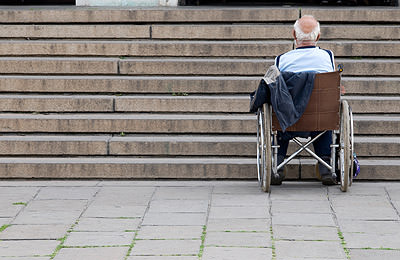 The Commonwealth Disability (Access to Premises – Buildings) Standards 2010 (Premises Standards) were introduced on 01 May 2011 and require greater levels of accessibility within the built environment.
The Commonwealth Disability (Access to Premises – Buildings) Standards 2010 (Premises Standards) were introduced on 01 May 2011 and require greater levels of accessibility within the built environment.
Essentially the objectives of the Premises Standards are to ensure that ‘dignified, equitable, cost-effective and reasonably achievable access to buildings, and facilities and services within buildings, is provided for people with a disability’.
The requirements of the Premises Standards applies to new buildings and existing buildings being upgraded, refurbished or altered where a building approval or building permit is required. This applies to buildings of a commercial nature (such as shops, boarding houses, short term accommodation, hotels, factories, schools, hospitals etc) and common areas with apartment buildings.
In victoria, this requirement has been included within the Victorian Building Regulations section 236.
The Standards introduced two new definitions that all parties involved in commercial projects must consider.
Affected Part: An ‘affected part’ is defined as:
• ‘the principal pedestrian entrance of an existing building than contains a ‘new part’; and
• any part of an existing building that contains a ‘new part’, that is necessary to provide a continuous accessible path of travel from the entrance to a ‘new part”.
New Part: A ‘new part’ in relation to an existing building, means:
• ‘a part of that building that is to be altered, including an extension to the building, in respect of which an application for a building permit/approval is made on or after 1 May 2011’.
Additionally, in Victoria, the Building Regulations 2006 also states that if an existing building is to contain a ‘new part’ then the new works (i.e. the ‘new part’) must comply with the current access provisions. Other States and Territories have also adopted other references within building legislation. More significantly for Victorian building work, in addition to the requirement for the new works to comply, Regulation 236(1) of the Building Regulations 2006 also requires any ‘affected part’ of the building to be brought into conformity with the current access provisions.
The ‘affected part’ within a building includes the main entrance of the building and associated paths of travel from the principal entrance of the building within the entry level to the ‘new part’.
Therefore, if works are planned on upper levels of the building the ‘affected part’ would also include any existing passenger lifts and the paths of travel from the passenger lift to the ‘new parts’ on those upper levels. Where there is no lift this could require the installation of a new passenger lift.
The implications of any non-compliances within the ‘affected part’ can have an impact on any commercial project, where unplanned or unforeseen upgrades of the ‘affected parts’ can blow out project costs or make the project non-viable.
It is important to note that the ‘affected part’ within a building does not however include any existing sanitary facilities (including accessible toilets) along the path of travel from the principal entrance of the building to the ‘new part’. (i.e. the existing toilets are outside both the ‘new part’ and ‘affected part’).
If the new part is on an upper floor that is over 200sqm, then a lift will need to be installed.
The legislation is then unclear on whether the stair needs to be upgraded as the lift is then deemed to be the ‘Affected Part’. In this circumstance, we would always strongly recommend the stair is also upgraded to mitigate any risks and litigation due to falls.
Click on the following link for more information on applying for unjustifiable hardship